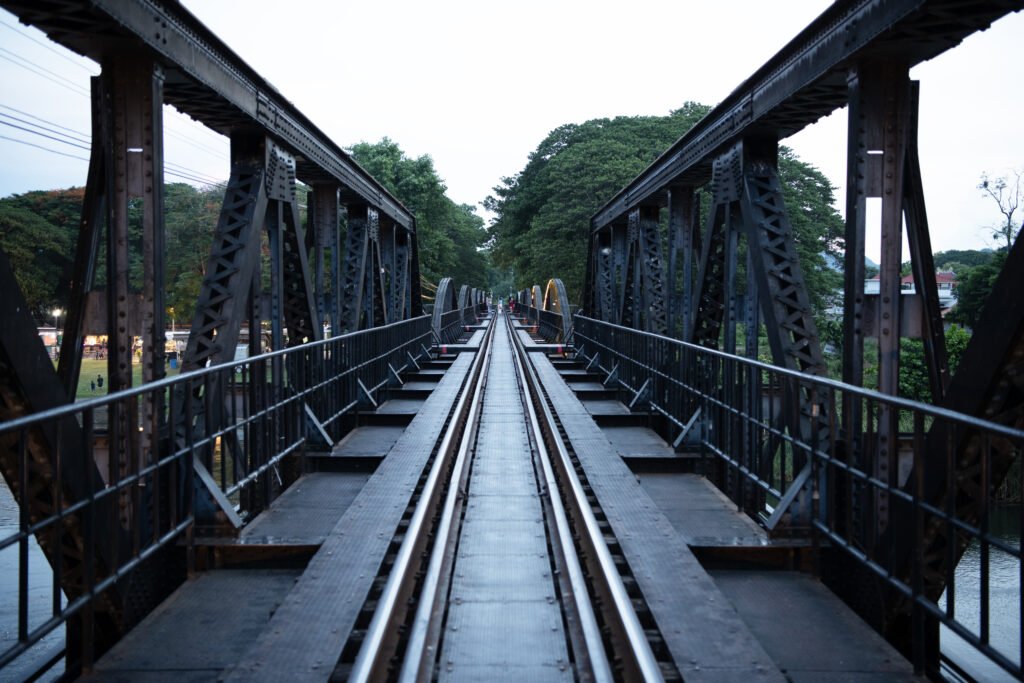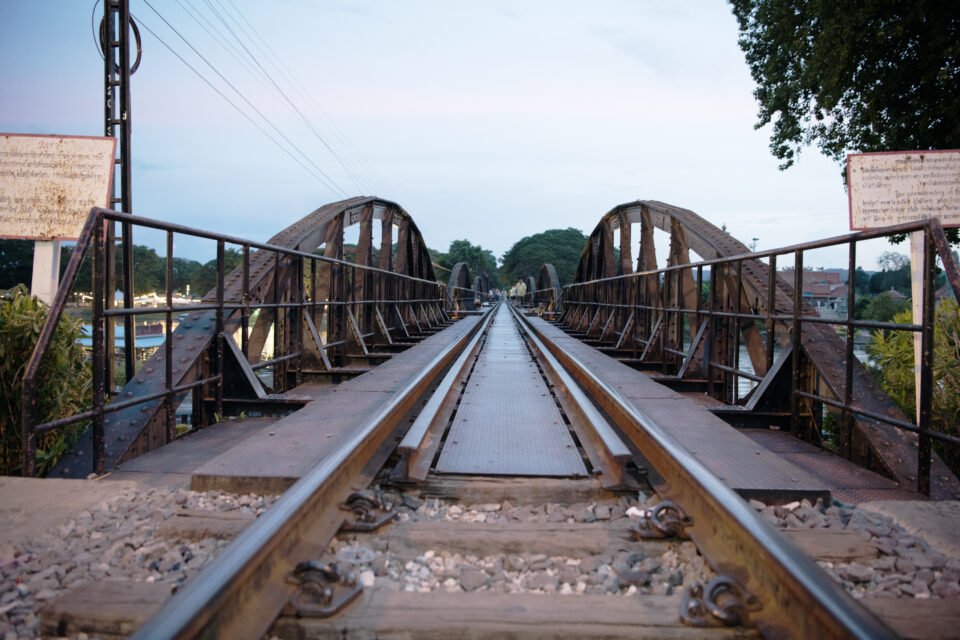The renowned Bridge River Kwai is located in Kanchanaburi, close to the Myanmar border. Japan built the meter-gauge railway line between Thanbyuzayat, Burma, and Ban Pong, Thailand, during World War II. 250 kilometers of the railway pass through the lovely Three Pagodas Pass. The Death Railway is what this is now known as.
In support of their intended attack on India, the railway line was designed to convey cargo there every day. Under terrible circumstances, POWs and Asian slave workers worked on the construction. The project took a year to finish after beginning in October 1942. Thousands construction workers died as a result of the treacherous terrain. For every sleeper placed in the track, it is thought that one life was lost.
Nearly 7,000 POWs who gave their life while building the railway are buried at the neighboring Kanchanaburi War Cemetery. At the Chungkai Cemetery, 2,000 more people are buried.
In 1944, the iron bridge was bombed by the Allies. Bridge River Kwai was torn in three pieces. The middle spans of the current bridge have two new spans. Presently on display in the War Museum are the bridge’s original components.
When The Bridge River Kwai was depicted in films and books, it became well-known all over the world. The David Lean film does a good job of capturing the cliff-hugging trails as well as the surrounding mountains’ and valleys’ natural beauty.

Bridge Nowadays, tourists travel to River Kwai. A side platform-equipped walkway has been created out of the railway. This enables pedestrians to cross the railroad bridge. These platforms are helpful for getting a good perspective and avoiding trains. Crossing the bridge in both directions is a tiny tourist train.
To commemorate the Allied bombing on November 28, 1944, the River Kwai Bridge Festival is held every year. The festival’s main attraction is a spectacular light and sound spectacle.
Getting there: Kanchanaburi, Thailand
Thailand’s Kanchanaburi, home of The Bridge on the River Kwai is 128 kilometers to the west of Bangkok is Kanchanaburi Town. From Bangkok’s Southern Bus Terminal, regular buses travel the route. Buses with and without air conditioning are both available for the three-hour trip throughout the day. Starting from Bangkok Noi Railway Station, trains run from Bangkok to Kanchanaburi. Owners of vehicles may go from Pinklao on the recently built expressway. The offices of the Tourism Authority of Thailand have the most recent schedules for buses and trains.
On weekends, Bangkok operates special trains just for tourists. The train departs Bangkok at 6.30 am on Saturdays and Sundays. It makes a 10-minute halt at Bridge River Kwai. This time can be used by visitors to sightsee and snap pictures. The train continues through the former POW camps. Tourists can take this train ride to observe the well-known Bridge River Kwai, historical sites, and the captivating beauty of the untamed alpine region.
The best option is to rent a tricycle if you intend to stay in Kanchanaburi and travel to adjacent locations. At rental businesses on Saeng Chuto Road and Song Kwai Road, you can also rent motorcycles and jeeps. To prevent being taken advantage of in Kanchanaburi, however, ask questions at the Tourism Authority of Thailand office about the costs and terms.





